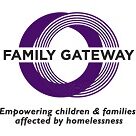July 8, 2019 – Dallas Observer – Stephen Young
North Texas picked up more new apartment renters than any area in the United States during the second quarter of 2019, according to data released last week by RealPage. As of July 1, DFW has 10,446 more occupied apartments than it did three months ago, the biggest quarterly jump in more than two decades, according to the property management company.
DFW’s apartment occupancy rate is now 94.9%, a touch higher than it was at the same point in 2018, when it was 94.8%.
“Apartment demand in Dallas-Fort Worth reached a high that hasn’t been seen since in more than 20 years. This really underscores North Texas’ strength at drawing new jobs and new residents,” said RealPage market analyst Adam Couch. “As an important finance, business services and transportation hub, Dallas-Fort Worth has created more jobs and drawn in more residents than any other area of the country in recent years.”
Despite increased demand, Dallas rental rates aren’t quite as painful as they are in other large metro areas. North Texas renters pay an average of $1,153 a month for their apartments, about $240 less than the U.S. average, according to RealPage.
The area’s continued high occupancy comes despite the fact that more than 25,000 new apartment units have gone on the market in the last year, with 33,500 more expected to be available over the next 18 months.
“New apartment deliveries are now at a 30-year high, and the region still leads the nation for construction activity. Notable areas for Dallas-Fort Worth with elevated construction levels include Intown Dallas and the Frisco area, with each expecting 3,000 units in the near term,” Couch said.
RealPage’s latest numbers will come as little relief to North Texas renters. Since 2010, according to the company, the area’s average rent has gone up 35% while the area resident’s average income has only gone up 16%, from $48,622 to $56,583. In Dallas County specifically, according to a 2017 study from the Center for Public Policy Priorities in Austin, more than 50% of renters are “cost-burdened”by their housing payment, meaning they shell out more than 30% of their gross monthly income in rent.
Rising rents and stagnating incomes mean more families are being forced out of their homes.
Ellen Magnis, who works for Family Gateway, a Dallas nonprofit that provides services to families affected by homelessness, told the Observer last fall that the center had seen its call volume double in the last year.
“If you’re making $10 per hour or $15 per hour or even $20 an hour between two parents and you’ve got a family of four, it is really tough to survive on that, so even a slight increase in rent could be all it takes to have that family end up on our door,” Magnis said.
Click here to see full story.
